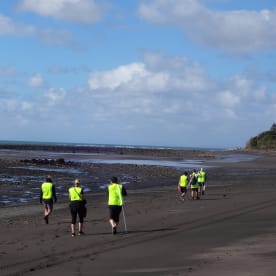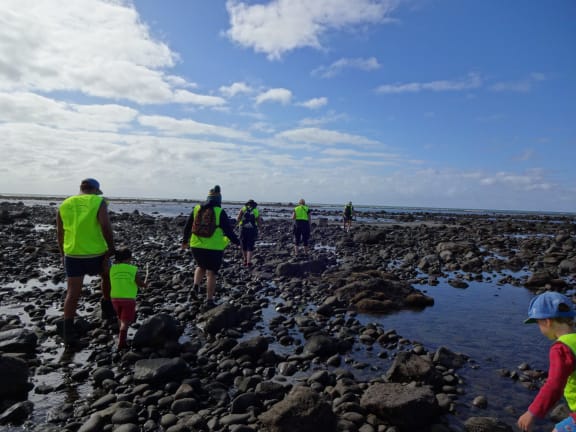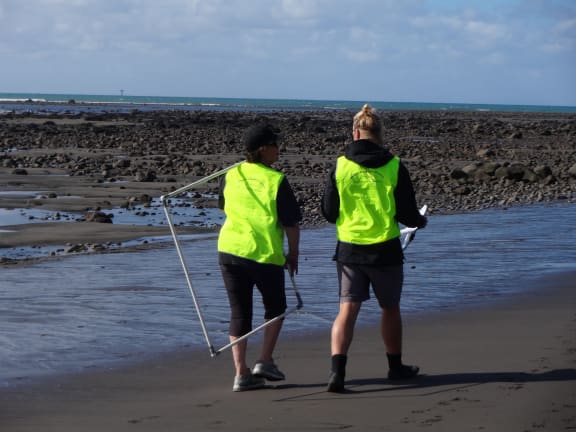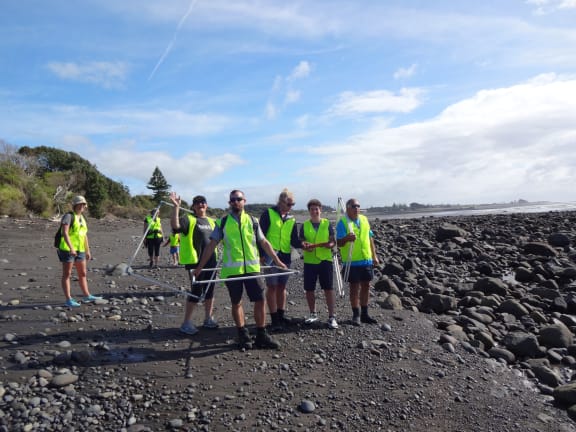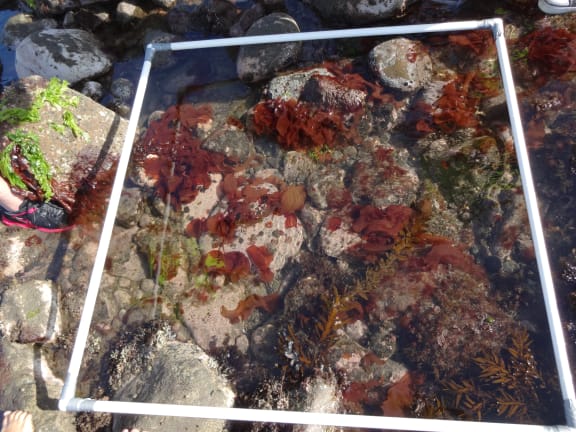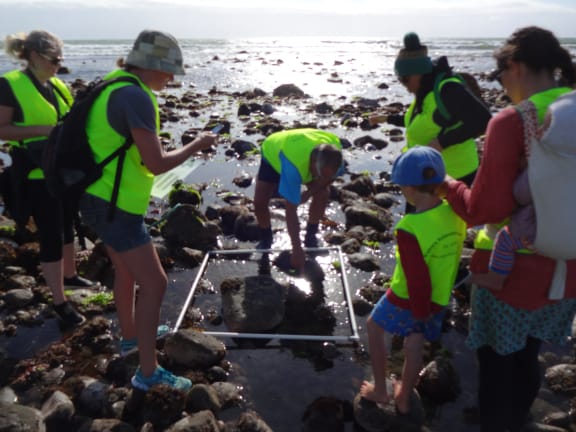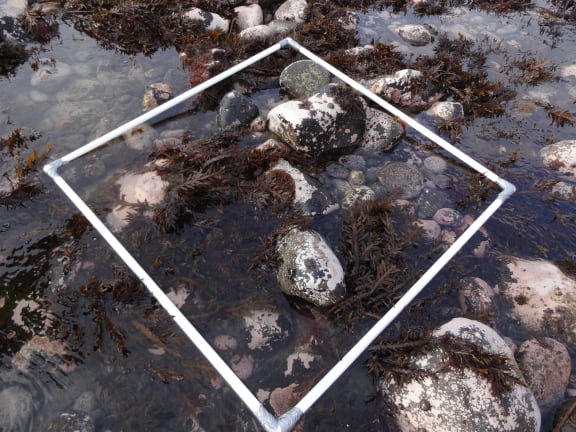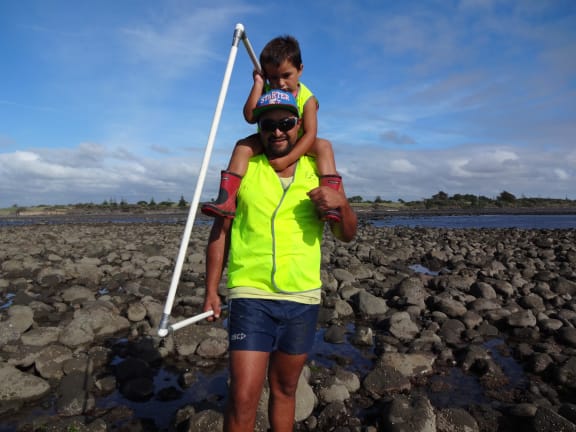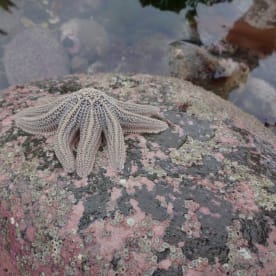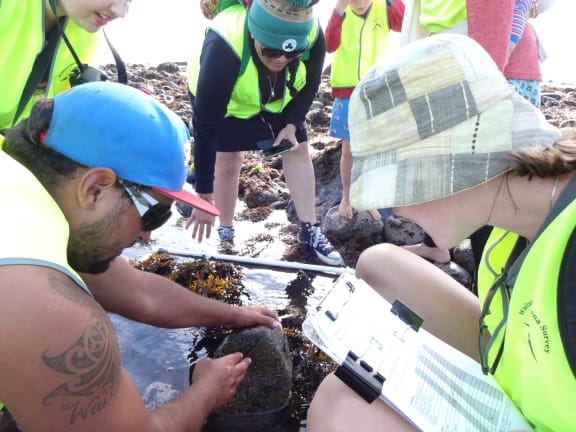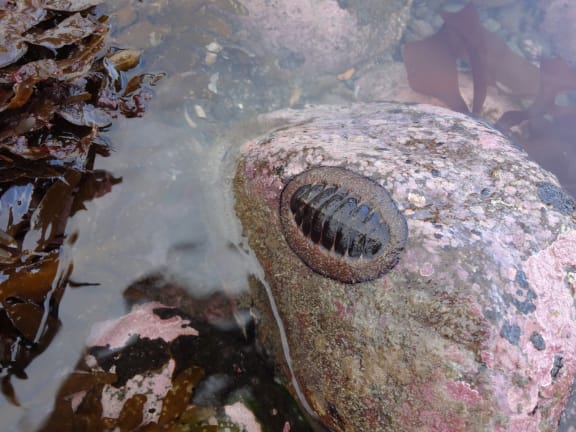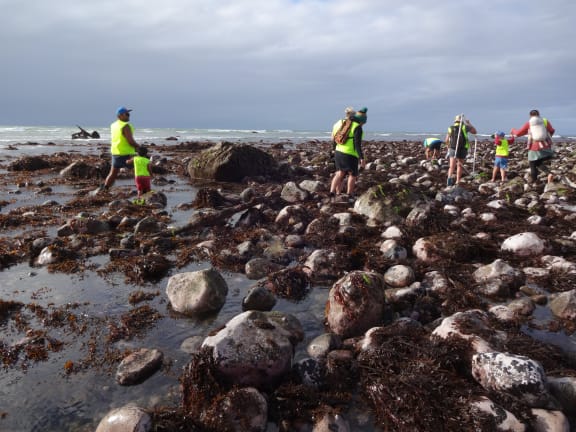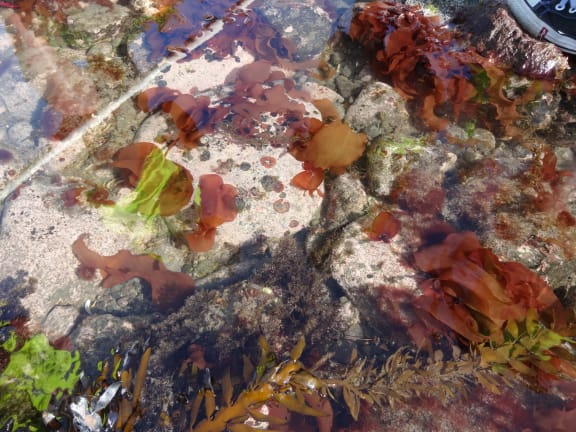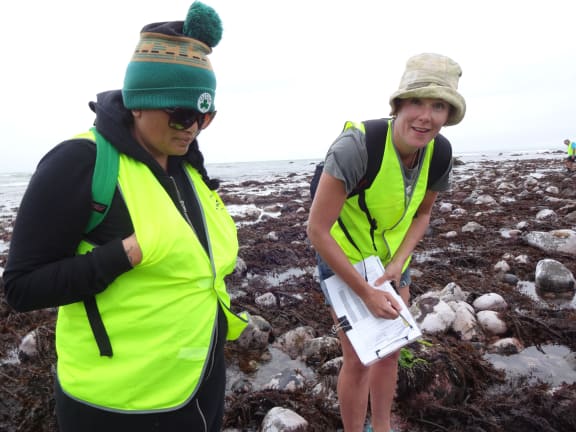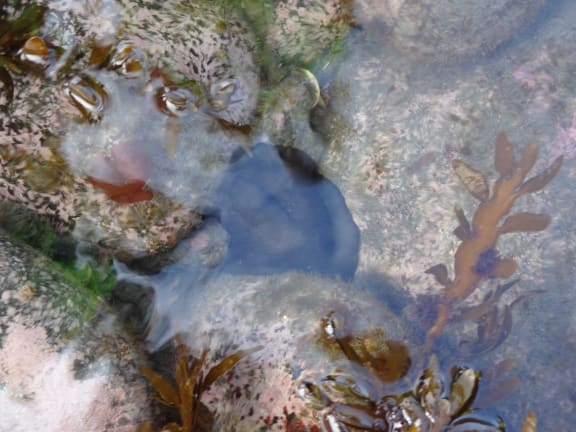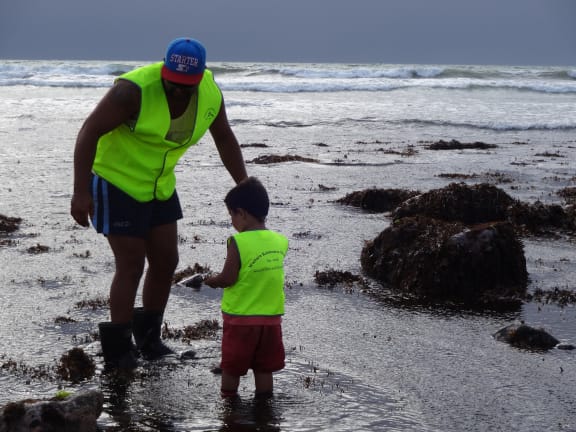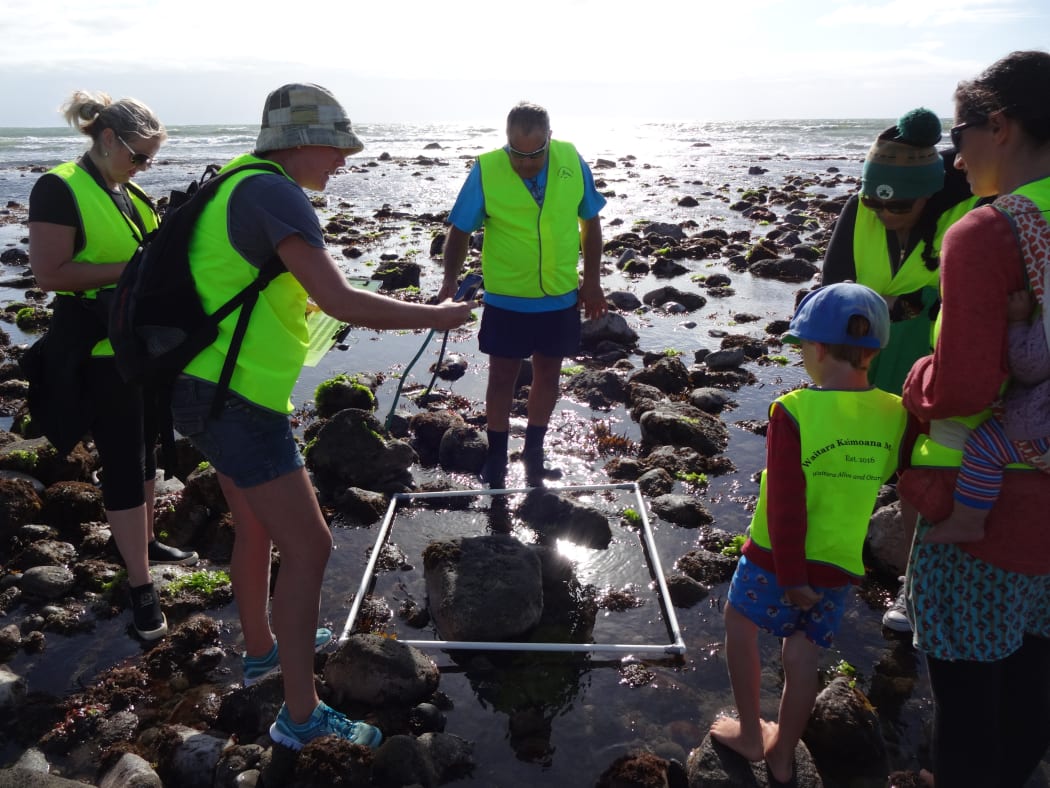
Exploring the health of the Waitara reefs, last surveyed 14 years ago. Photo: Veronika Meduna / RNZ
A local hapū, the Waitara community and marine scientists have joined forces to survey the health of marine life on the Airedale reef, off the Taranaki coast.
The reef is part of the Waitara reef system, which was last surveyed 14 years ago by members of the Otaraua hapū, and the citizen science group is exploring the health and abundance of kaimoana on the reef to monitor for any changes since then.
In the past, the reefs have been affected by pollution discharged by the Waitara River, which had been a drain for the Waitara freezing works and the town’s sewage for decades until the 1970s.
Since then, the outfall pipes have been shifted further out to sea, and the community has put great effort into restoring the coastline.
Robyn Martin-Kemp, speaking on behalf of the Otaraua hapū, says the reef is close to people’s hearts.
“We’re looking at sustaining our reef so that our children and their children, and so on, can use the reef as our forefathers did and as we did for kai.“
The group is using the 2001 survey as a baseline for any comparisons, but has added technology, including an app to record images and GPS references.
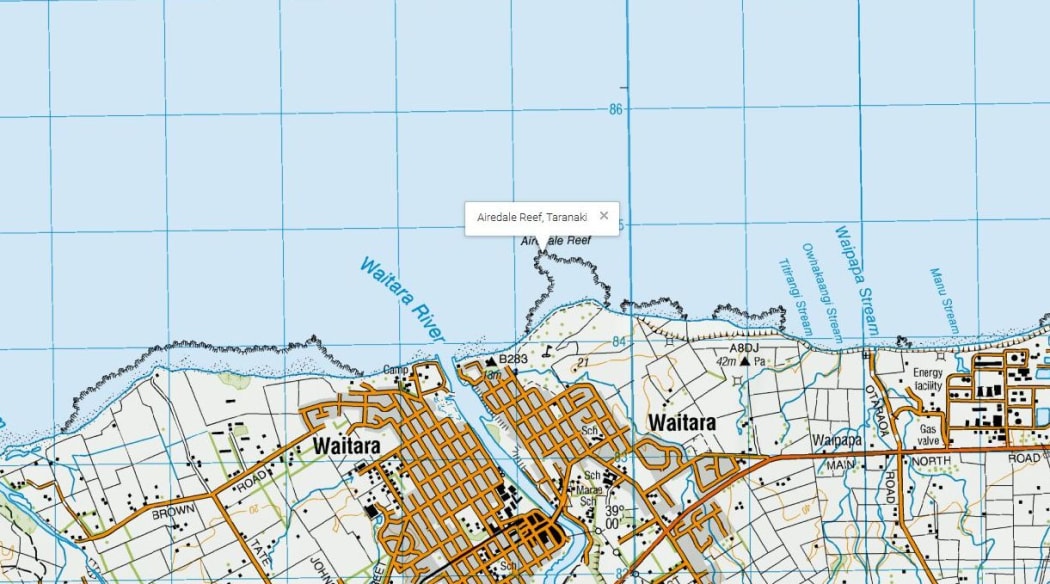
Photo: Supplied
Emily Roberts, a marine biologist at the Taranaki Regional Council, says she hopes the survey will be repeated annually and the photographic record will help the group to keep track of how the reef has changed.
The project is the first in the Taranaki region to be funded through the Participatory Science Platform, a programme that hopes to encourage community groups to take on science projects.
Lucy Graydon, at Venture Taranaki, says it was the first to be approved because of its strong links to history and community engagement.
“They really care about their river, they really care about their reefs. There’s been a lot of controversy about things that have happened out there in the past. This is a way for them to learn about how they can gather information to feed those conversations about how they want to protect that environment.”
She says the fund aims to take the idea of citizen science one step further.
“We want to move from the community being just used to gather data but actually take them on the entire journey of a science project to find out what’s locally relevant to them, how they can explore that using science, and take them through that process of shaping a science project, gathering data, analysing it, gaining insights, thinking about what other questions they want to ask and how they can share their knowledge.”

